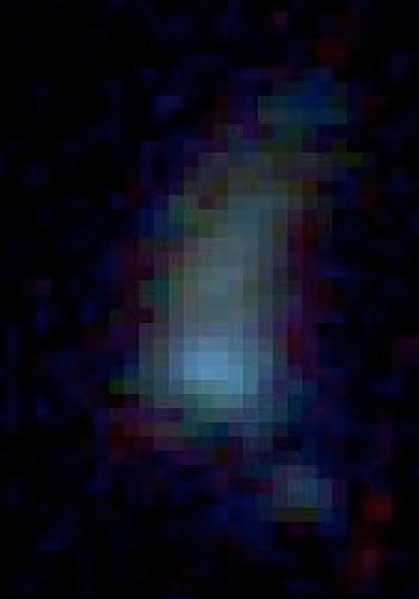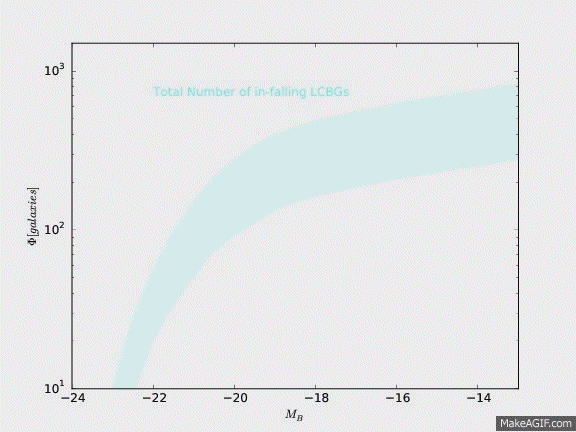Luminous Compact Blue Galaxies--A critical phase in the evolution of dwarf elliptical galaxies
An important test of galaxy evolution theory is to connect populations of galaxies that we see in the past to galaxies observed in the nearby Universe: What were the progenitors of the spiral, elliptical, and dwarf galaxies that we observed today? The most numerous type of galaxy observed are dwarf galaxies. They are believed to be the basic building blocks that form larger galaxies. In the largest structures in the Universe, dwarf elliptical galaxies are the most numerous type of dwarf galaxies. These galaxies are small and dead: they have lost all of their gas and are no longer forming stars. But how did they end up in clusters and in this state?
Well, in all likelihood, these galaxies have been falling into clusters since the beginning of time where the dense environment in galaxy clusters triggers a burst of star formation signaling the end of their lives. This hypothesis is based on observations of Luminous Compact Blue Galaxies (LCBGs) – a population of galaxies bursting with star formation seen primarily when the Universe was half its current age.

What are LCBGs? They are compact galaxies original discovered by Koo & Kron in the 1980s. Follow-up observations indicated that the typical sizes of LCBGs were 2 kpc, similar to the Magellanic Clouds, but they had magnitudes of M_B = -21, similar to the Milky Way. LCBGs typically have extremely blue colors and much higher star formation rates than what is expected for their sizes.
Now, when we look for LCBGs in galaxy clusters, and we were looking at the largest galaxy clusters that are known, we found these clusters had far more LCBGs than one would expect based on their density in the field. The population of LCBGs in clusters was enhanced as compared to the field similar to the enhanced number of dwarf elliptical galaxies seen in local galaxy clusters. More so than that, the distribution of LCBGs in clustes, both in space and velocity, seems to indicate that they are recent arrivals ot the cluster environment.
In our most recent work, we found the cluster LCBGs were very similar to field LCBGs and had similar properties to local dwarf elliptical galaxies. As compared to dwarf elliptical galaxies, LCBGs had a similar size, dynamic mass, and chemical abundance. If we make some reasonable assumptions about their accretion rate and how the dense cluster environment effects LCBGs over time, we can compare how the luminosity function, the number of objects per magnitude, of LCBGs compares to dwarf elliptical galaxies. As can be seen below, between 30-75% of dwarf ellipticals likely went through an LCBG phase in the last 8 Billion years.

Many dwarf elliptical galaxies in nearby clusters do show evidence for recent in-fall and past bursts of star formation. This is consistent with what we find in LCBGs.
Nonetheless, we did find some interesting results. Most LCBGs in clusters had a very close neighbor and approximately 10% of LCBGs are expected to merge with that neighbor. Furthermore, 30% of LCBGs showed evidence for either obscurred star formation and/or a complex burst of star formation. These are two interesting areas to follow-up to determine how LCBGs might evolve in the future.
For more information, see S. M. Crawford et al., Spectroscopy of Luminous Compact Blue Galaxies in Distant Clusters. II. Physical Properties of dE Progenitor Candidates, 2016,The Astrophysical Journal, Volume 817, 87. And also available on the arXiv.
